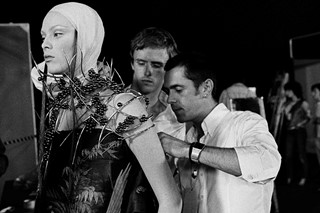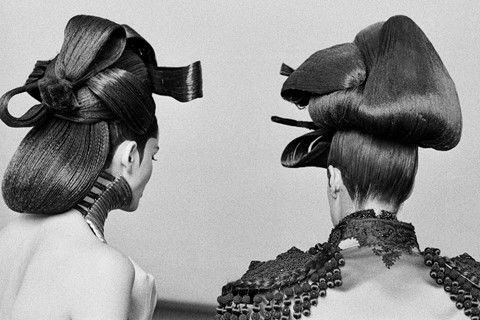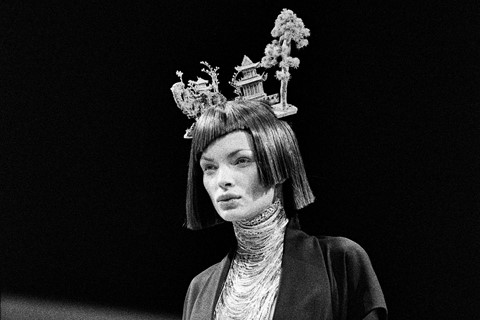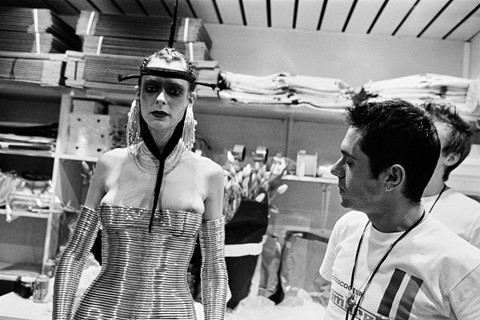As the jewellery designer’s debut book is set for release, he reflects on his life and career
Alexander McQueen’s runway shows were dangerous in all senses of the word. A man who knows this better than most is jewellery designer Shaun Leane, McQueen’s close friend and collaborator, responsible for creating some of the radical pieces that formed an integral part of the designer’s collections. This year, Leane turns 50 and celebrates 21 years in the fashion industry. To mark this personal and professional milestone, he is releasing a debut book that outlines his life and career. Here, Leane shares some of his memories with AnOther.
Hannah Tindle: The year 2020 is a milestone for you both personally and professionally – how are you dealing with it in light of coronavirus?
Shaun Leane: I always approach my work with adrenaline and excitement, so it was the same at the start of this year. I started working on the book about two years ago, planning for it to be supported by a retrospective exhibition of my work in London and New York. I was also going to create 21 new pieces to celebrate 21 years of the business. Then lockdown happened. I’m always of the mindset that there’s got to be a positive to come out of a negative. For me it has been the gift of time. Most importantly, when the proof of the book was sent to me a week and a half after lockdown started, I had time to process my life’s work on paper. But it’s not just about my work – it’s about my relationship with Lee McQueen and getting closure with him.
HT: Why do you think you and McQueen became so close in life and work?
SL: Lee and I were very similar as people because we had very similar upbringings. So I had vulnerability but also ferocity. I had a respect for heritage and craft and beauty – but I craved something new and something bold. When I met Lee he brought that out in me even more. The beautiful thing about working with Lee was that he gave me a platform where there were no boundaries and there was total creative freedom.
HT: How did you edit the selection of backstage images taken by Ann Ray?
SL: The second chapter – which is dedicated to Lee – includes pages of images by Ann Ray. They have never been seen before. Ann is a very tender photographer and she followed Lee around for 17 years. She shot every show backstage. And unbeknown to me, she was also following me. She loved the relationship Lee and I had. So when I was starting to think about the book, I got in touch with Ann to see if she had any pictures I might be able to use. She said ‘Shaun, you can use any images ... I have about 10,000’. I spent three days in her showroom in Paris going through them and it was one of the most emotional experiences I’ve ever been through. It was a big chunk of my life right there in front of me.
HT: What stories and memories can you share of the shows you worked on with McQueen?
SL: There’s so many! The one that sticks out in my mind is the spiky shoulder piece I made for Karen Elson for the S/S01 Voss show. As she walked backstage after her turn on the catwalk, the heel came off her shoe. She fell against a screen and the piece ripped through it and luckily softened her fall. All the girls were screwed into the pieces. It wasn’t something that you could just lift over her head. Lee screamed out my name and I ran over and I started taking her out of the piece. But Karen said, ‘no leave it on! I want to do the finale in it!’ Lee agreed, but insisted she couldn’t wear any shoes. But the stylist, Katy England, insisted she should wear them. So there’s this argument going on, the finale is about to begin and I’m standing there in the middle with a screwdriver. But Katy was right: Erin O’Connor had shattered the razor shell dress she was wearing as part of the show, so there were broken shells and glass all over the runway. Karen would have cut her feet. So in the end, she wore the shoes – but Lee came out alongside her holding her hand so she wouldn’t fall.
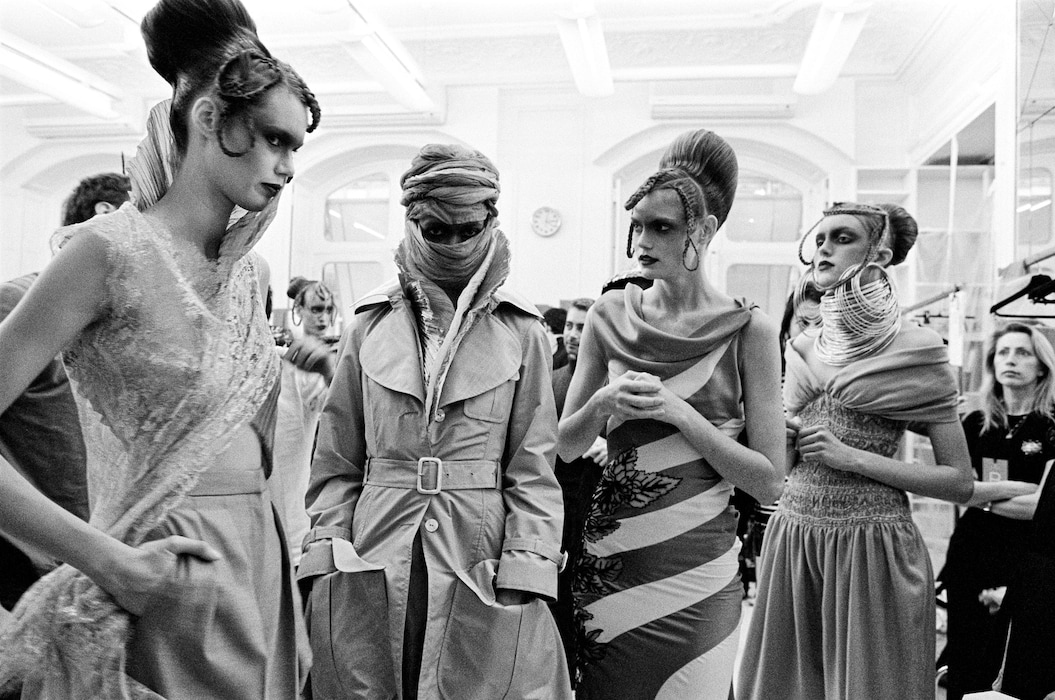
HT: What about the infamous coiled corset for A/W99, The Overlook show – any dangerous encounters with that?
SL: Laura Morgan was wearing the corset and it took about 20 minutes to screw her into it. The show was in a glass box with an ice rink in the middle of it. There was snow, too. There were so many elements that could have gone wrong, but it was a real success. We were all backstage when it finished; elated, celebrating and so happy. The press were everywhere, trying to talk to and photograph Lee. Among all the press he made a beeline for me and said: ‘Shaun, your piece blew me away’. For me, that was the first body sculpture I’d ever done. To have a visionary like him compliment me was amazing. But then through that excitement, I totally forgot about Laura who was still screwed into the corset – so we all went down to the pub and I left her in it! We didn’t have mobiles, so someone had to come and find me and I had to run back and unscrew her from it. Then she joined us and we got absolutely leathered!
HT: How did you and McQueen work together collaboratively on shows?
SL: I had a full-time job in Hatton Garden. So I would meet Lee on my lunch break or after work in a pub – either The King of Diamonds near my work or The Eagle on Farringdon Road. Eight times out of ten the designs and the concepts at shows were dreamt up in pubs or at a bar. I’d meet Lee and say, ‘so, what do you want to do for the next show?’ And he’d either have an idea of one piece that he would want, or he would tell me the concept and I would go away and design several pieces. Then we’d push each other to explore new materials and techniques. I loved the challenge and figuring out how to adapt my skills.
HT: You also created the jewellery for Givenchy during McQueen’s tenure – how was that experience?
SL: The beautiful thing about the Givenchy shows was that the budgets were obviously higher – particularly for haute couture. So I could work in silver and semi-precious stones. I would have a little bit more time, too – which was always a blessing! Instead of six weeks, I’d have eight.
HT: A lot can happen with two more weeks!
SL: That’s right! Alongside less time, budgets were always less with McQueen shows. But I think when budgets are small, you can be so innovative with the materials that you use. And then you create really provocative and interesting pieces. For example, for A/W01 we were sponsored by a Tahitian pearl company. They gave us strands and strands of triple-A grade pearls. So I made several pieces draping them through taxidermied bird claws – it was a real juxtaposition of materials. We broke the mould. We questioned why pearls always had to be fused with gold and platinum – why not combine a creature from the sea with a creature from the sky?
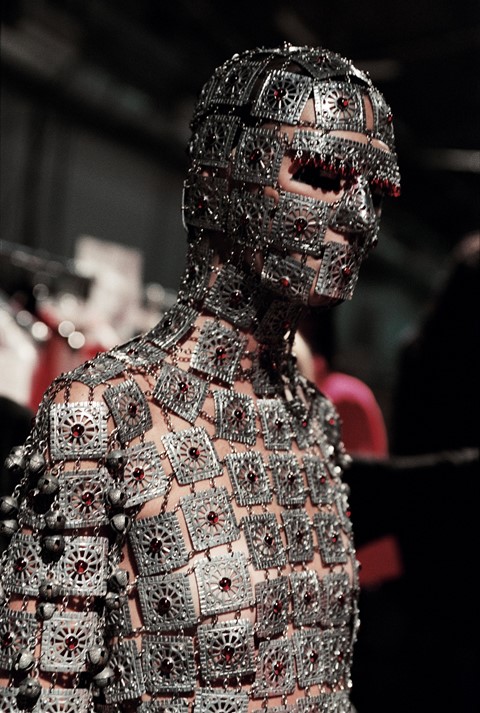
HT: How do you think you have changed the way that jewellery functions in runway shows?
SL: During the time Lee and I were working together, there were a lot of collaborations going on – myself with McQueen, Naomi Filmer with Hussein Chalayan, Scott Wilson with Karl Lagerfeld. We were all very young innovative jewellers that really wanted to marry fashion and our traditional craft. I wanted to push the boundaries of jewellery to become part of fashion – not just be an accessory. McQueen and I would fuse it to the point where you would question whether the garment was jewellery, or vice versa. I do hope this has led the way for others to be fearless when approaching how jewellery should be worn and what it should be made of.
HT: Are there any other designers you’d like to work on a show with?
SL: Since Lee died, I’ve worked in fashion. I did a collaboration with Pat McGrath recently, I’ve done collaborations with magazines ... I’ve always been part of fashion. But I’ve never really worked with another fashion designer, because Lee was my closest friend. I had a special relationship with him. But if I were to work with another designer it would be someone like Gareth Pugh. I think he’s amazing.
HT: What do you think the future holds for jewellery design?
SL: That’s a good question. You see for me, in 2019, it felt like the tides were changing. Mass commercialism, vanilla advertising, all this boring, boring stuff that we’d seen for years felt like it was coming to an end. I felt this surge of energy. I thought 2020 was gonna be it! I think Covid-19 may have slowed that down again – it’s really sad for me to say that. But we now face a world of uncertainty. And people are going to want to create what sells. But we will always have the avant-garde. These artists and designers will be few and far between – a handful of fearless creatives. But they will shine all the brighter for it.
Shaun Leane is available from July 2020, published by ACC Art Books.

